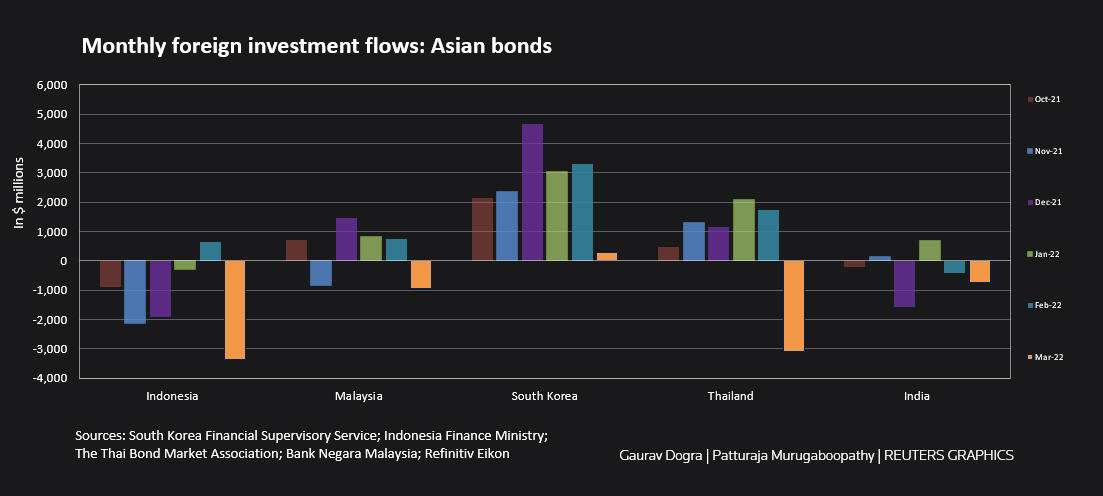The largest bond sell-off since the pandemic’s peak is being exacerbated by an unanticipated increase in Indonesia’s sovereign debt supply, which also makes the asset class more susceptible to Treasury actions.
Due to the government’s intention to issue more than twice as much debt this quarter as it did a year ago, Indonesian bonds experienced withdrawals for the third consecutive month. That comes after hawkish bets by the Federal Reserve caused outflows of local assets, causing the country’s 10-year yield to spike 54 basis points in September—the highest level since March 2020.
From a 10-month low of -0.26 at the end of July, the 30-day correlation between 10-year Indonesian bonds and similarly-dated US yields has recently increased to 0.42. That indicates a higher likelihood of simultaneous movement for the two asset classes.
Due to the Israel-Hamas conflict, traders have been more dovish on Fed bets this week, although they still anticipate longer rate increases. Thus, rupiah bonds may continue to be negatively impacted by Indonesia’s growing link with US interest rates.
According to Lin Jing Leong, a senior EM sovereign analyst at Columbia Threadneedle Investments in Singapore, “in this environment, actual supply comes through at the backfoot,” given the anticipated increase in supply and expectations that the Fed will maintain its tighter monetary policy for an extended period of time.
Nevertheless, she noted that increasing cash levels today can potentially result in less debt being issued in the upcoming quarter.
In contrast to the 75 trillion rupiah it raised in the final three months of 2022, the Indonesian government is aiming to raise 168 trillion rupiah ($10.7 billion) in the fourth quarter.
Citigroup Inc. strategists, including Gaurav Garg, warned in a report last week that the pressure on Indonesian bonds from the recent selloff in global fixed income may become more evident in the absence of favourable supply tailwinds. The note states that Indonesia’s 10-year yields will only become appealing when they approach 7.4%. That is a rise of almost 60 basis points over the present level.
If the outcomes of recent auctions are any indication, the Indonesian government is also seems more accepting to higher rates. The government was keen to price the bonds despite limited demand, as evidenced by the broad auction tail, which is defined as the difference between the highest and average bid yield.
At 19 basis points, the 20-year auction tail was the biggest this year and higher than the average tail of 2.3 basis points for the entire year. The 5-, 15-, and 30-year debt gauges were likewise the widest this year.
With $314 million pulled out so far this month after pulling out $1.09 billion in September—the highest withdrawal in over a year—international investors are still pessimistic about Indonesia’s bonds.
Last Thursday, Bank Indonesia declared that it was purchasing bonds from the market in an effort to “build confidence.” Although the purchases are unlikely to raise prices, they might stop the selloff, according to Societe Generale SA’s macro strategist in Singapore, Vijay Kannan.

